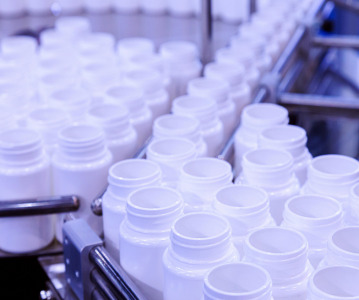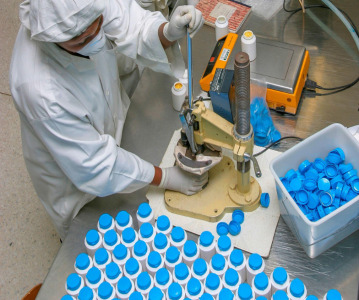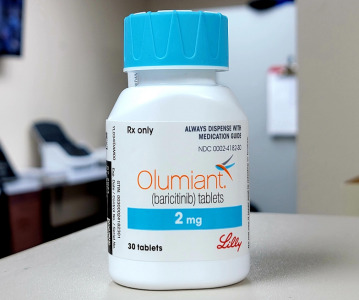How far has the pharmaceutical packaging industry come on its journey to sustainability?

At this year’s Pharmapack Europe, we interviewed Gregor Anderson, Managing Director at Pharmacentric Solutions on how the industry is striving for greater sustainability with regards to packaging and devices.
Where is the pharmaceutical packaging industry currently at with regards to achieving sustainability?
To be able to chair a sustainability panel at Pharmapack Europe for three-and-a-half hours speaks for itself! A range of speakers, from industry professionals to recyclers, very kindly presented their own sustainability case studies, which were packed with information.
It’s clear that while different companies are in different places and take different approaches with regards to boosting sustainability, it is a topic very much on every company’s agenda. Pharma companies are starting to set sustainability targets and collect relevant metrics, and they are incorporating these into corporate responsibility.

What was also great is that many suppliers attended the conference, demonstrating their genuine interest in boosting sustainability from the supplier side. The interaction between what suppliers are looking for and what pharma’s vision is, as far as sustainability is concerned, is going to be of great importance. Previously this was probably a little disjointed, as suppliers tried to guess what pharma companies were looking for in their products, but now there is a lot more conversation going on between the two parties and pharma companies are starting to see suppliers as part of the sustainability solution. This is something that was mentioned several times in the conference.
How important is it now for pharma companies to question their suppliers regarding recycling?
It is extremely important. Pharma companies need to question their suppliers about their commitment to recycling more plastic and producing less waste. Pharma depends on its suppliers to make packaging and devices, and it is increasingly looking at which suppliers possess modern equipment to minimise waste in processing, as well as those who are making recyclable products. Could suppliers look to reuse and rebrand waste materials? A big concern, as highlighted in the conference, is that 50% of medicines don’t get used or are not taken properly. This presents a real opportunity for pharma and healthcare providers to boost sustainability by increasing patient adherence, and by cutting down on waste.
Healthcare providers especially need to try to understand why patients, particularly those with a chronic disease, are not taking their medicine properly.
Connected devices are another area where currently there is a lot of waste. There should be a real push for making connected devices and electronics reusable rather than disposable. For example, there is a device that has been launched in the US with a sealed-in battery, that is to be thrown away after a month’s usage. This product wouldn’t be allowed in Europe, because companies must set up their own recycling capabilities for sealed-in batteries. Either this, or the battery has to be taken to a specialist centre for disposal. So suppliers need to start developing more recyclable and reusable products for sure, but poor patient adherence cannot be ignored as another problem that must be tackled to improve sustainability in pharma and healthcare.

"Suppliers need to start developing more recyclable and reusable products for sure, but poor patient adherence cannot be ignored as another problem that must be tackled to improve sustainability in pharma and healthcare"
What are the main challenges for boosting patient adherence (and subsequently sustainability) via connected devices?
I feel that patient adherence is something that is complicated and not fully understood; it is extremely hard to make claims that certain technologies/electronics improve patient adherence.
For example, the connected device from the US I previously mentioned has a counter on it, which generally does help with adherence. However, the literature on the device says that the electronic capability is not scientifically proven to improve adherence.
It is also important to consider that the patient population that struggles with adherence typically tends to be elderly, who do not use devices such as phones as part of every day life, so pharma companies should definitely look at tackling adherence problems without using such devices. The elderly patient population in particular just want something that is simple and easy to use and understand, something that tells them when to take their medicine.
But you can imagine that if you are on six different medicines and having to use six different connected devices it could start to get very confusing.
It also must be mentioned that training healthcare professionals to use complex devices is critical, and more time and effort needs to be spent to get training right. A doctor typically only has about 15 minutes with each patient, so making sure that they can quickly and proficiently teach the patient how to use the devices depends on if they are well trained themselves.
It is also not uncommon for doctors to prescribe 40 to 50 devices e.g. for respiratory diseases – how are they going to manage to teach and train for all of these devices? If a company is developing a new device they should also develop a parallel training programme for healthcare professionals, and possibly even correct usage video tutorials for the patients. And ultimately by boosting patient adherence, less medicine will get wasted, and sustainability will improve.
What is your take on the current use of PVC in packaging?
France recently announced that they are going to completely avoid using PVC in all of pharma packaging, which will have a huge impact, considering that PVC is used in so many packaging forms including blisters. There is also a concern regarding the impact it will have on historic medicines, and extensive testing has already been carried out and patients know how to use the packs.
There is no doubt that the initial capital investment to develop alternative materials to PVC will be enormous, as this affects more industries than just pharma. But we need to look at the reverse logistics – what do you do with all the PVC packaging that pharma currently has? My view is that a gradual transition is needed – PVC should be kept, for now, for historic products that we all know and understand, but I would advise new drugs to be put in new materials. This will involve pharma companies working with material manufacturers in a development process that could take 10–15 years. It’s the same in the car industry – the transition to an electric car will take possibly up to 25 years because the current industry infrastructure has been built over many years, making it difficult to break out of suddenly.
Could you give an overview on the GlaxoSmithKline sustainability case study?
The UK government set GSK a target to try and recycle 50% of meter dose inhalers by 2020. The scheme has been running since 2011, but currently the recycling rate of these inhalers is about 1.5% - way off the 50% mark. But there is definitely opportunity to increase this to around 50%. A more widely driven initiative, where all stakeholders can get involved, is to encourage users to return their inhalers to the company for recycling. About 95% of the inhaler can be recycled.
There is a great opportunity for stakeholders such as the suppliers, pharma companies, the NHS etc. to come together to encourage the return of used inhalers. Stemming from this, I believe that injectors can also follow suit. And other countries can definitely adopt the scheme too. We design and manufacture these devices to the highest quality and using the best materials because they have to work every time. And because of this, patients feel guilty about throwing them away. So I have no doubt the patients would want to play their part by recycling the products to reclaim the materials.
How far has pharma come on the road to sustainability?
We are around the 20-30% mark and the opportunity is there to do more. We are seeing pharma companies become increasingly concerned with sustainability. Companies now have whole sustainability departments, who aim to save money and reduce waste, as well as their CO2 footprint. These sustainability departments are working with those from suppliers, and as a result we are seeing increasingly efficient packaging being designed and engineered.
How important are debates and conferences like this, for people to come together and put ideas forward?
Sustainability is a part of every industry conference now. These talks give individuals/companies the opportunity to share case studies and enable the collective discussion of how we can all work together to tackle the bigger challenges. Without a doubt these talks are important, and I encourage the industry – including the suppliers – to come to Pharmapack and share their stories.
Related News
-
News Women in Pharma: Moving beyond discussions and into best practice at CPHI Milan
In this second CPHI Milan special of our monthly series, we cover the key takeaways from the Diversity & Wellbeing track held on October 10, 2024. -
News AstraZeneca invests in AI collaboration for cancer drug trials
The British-Swedish pharmaceutical giant is partnering with biotechnology firm Immunai Inc to increase the efficiency of some cancer drug trials. -
News Ozempic and Wegovy prices questioned as Novo Nordisk faces US Senate hearing
The CEO of Novo Nordisk was grilled during a US Senate committee hearing on September 24, 2024, in which the exorbitant prices of the Danish company’s blockbuster drugs Ozempic and Wegovy were called into question. -
News The BIOSECURE Act: implications for the pharma supply chain
On September 9, 2024, the US House of Representatives voted to pass the bill titled the BIOSECURE Act (the Act), which lists several Chinese companies in the pharmaceutical supply chain. The Act will prohibit American companies from contracting or doin... -
News On Track at CPHI Milan: Thermo Fisher Scientific Track Sponsor interview
With CPHI Milan just around the corner, we sat down with some of the sponsors for this year’s conference tracks to discuss the most pressing topics in pharma. -
News CPHI Milan Speaker Spotlight: Pharma Manufacturing and Localisation in Africa
In the run-up to CPHI Milan, we sit down with some of the experts and thought-leaders speaking at this year’s conferences. -
News US BIOSECURE Act passed by US House of Representatives
The controversial act, which has already impacted several foreign companies operating in the US, was passed by the House of Representatives on September 9, 2024. It is now headed for the US Senate before it can be signed into law by President Joe Biden... -
News Eli Lilly licenses rheumatoid arthritis manufacturing in Africa
American pharmaceutical company Eli Lilly has signed a partnership with Egyptian organisation Eva Pharma to localise manufacturing of rheumatoid arthritis treatments in Africa.
Position your company at the heart of the global Pharma industry with a CPHI Online membership
-
Your products and solutions visible to thousands of visitors within the largest Pharma marketplace
-
Generate high-quality, engaged leads for your business, all year round
-
Promote your business as the industry’s thought-leader by hosting your reports, brochures and videos within your profile
-
Your company’s profile boosted at all participating CPHI events
-
An easy-to-use platform with a detailed dashboard showing your leads and performance

.png)





